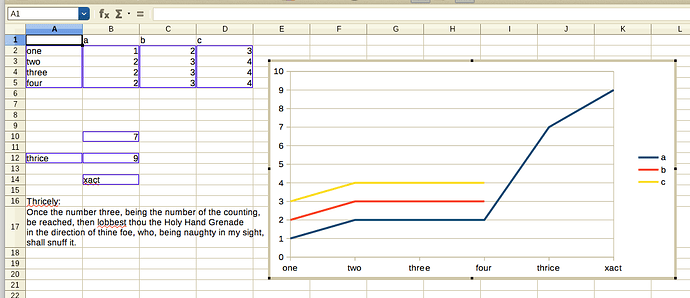Got noncontiguous data ranges to work in single chart data series, but I’m failing to include each range’s adjacent labels.
The chart sample stops labelling where the first range ends, with addended ranges missing labels. Please ignore the label format and ticks as irrelevant to the question. From the following illustration, you can see where the ranges join because the labels stop. Also, I confess I don’t really understand what Format/Data Ranges…/Data Series/Name means. Data Ranges/Y-Values makes obvious sense because that’s where my combined data ranges are listed, but Data Ranges/Name, not so much. The unshown data is correct, but here are the axis labels:
Screen Shot 2020-06-05 at 01.31.06.png
A related question helped me understand I needed a comma delimiter, not a semicolon.


